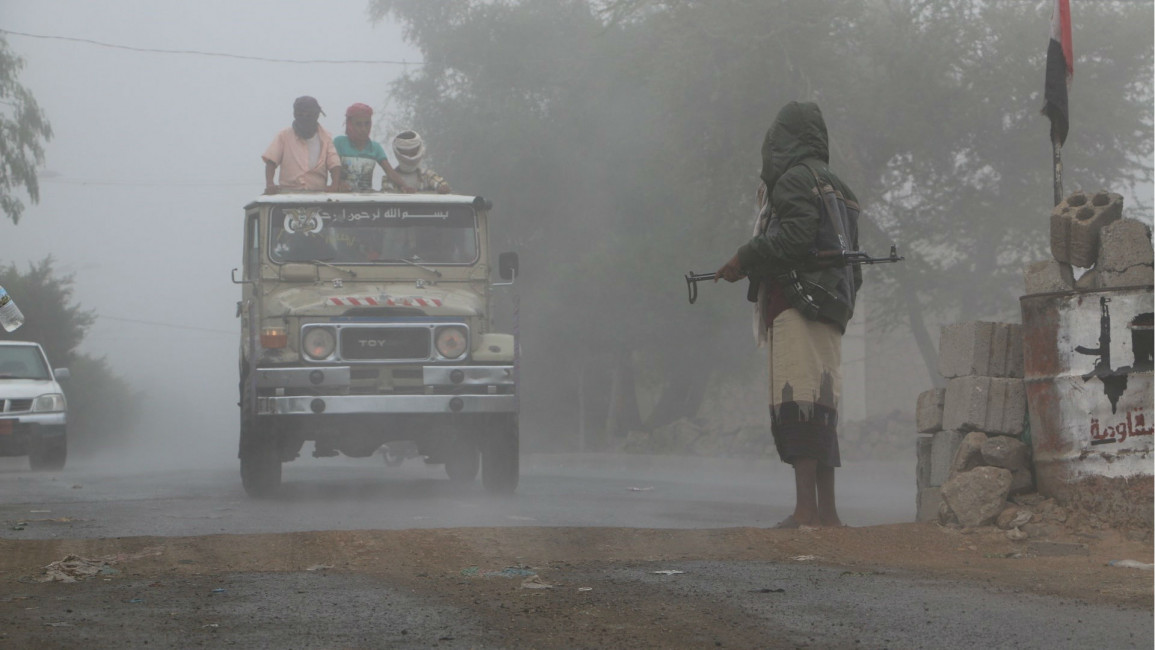Further extreme weather to hit al-Qaeda's Yemeni strongholds
With Yemen having just recovered from one devastating storm, another is brewing in the Arabian Sea, heading northwards towards the Yemeni coast.
So far Megh is classified as "a tropical storm", but it is predicted that it could intensify into a cyclone in the next 24 hours.
On Monday and Tuesday, Cyclone Chapala wrought havoc on Yemen, exposing the country's substandard infrastructure following decades of neglect.
Yemen's chronically underfunded emergency services also appear ill-equipped to deal with extreme weather conditions that have been whipped up this week.
At time of publishing, Megh was still 970km from Oman's shoreline, but moving westwards.
Winds at the heart of the storm are already 40-50 knots and expected to intensify in the next 24 hours.
"As far as [we are] aware, it is unprecedented to have back-to-back cyclones in this part of the Arabian Gulf in the space of a week," the UN's weather agency reported in a statement.
Cyclones are becoming increasingly common in the Arabian Sea, although it is usually the north of Oman that suffers most.
But concerns among residents in southern Yemen and Oman about extreme weather are now mounting.
|
— BBC Weather (@bbcweather) November 6, 2015" style="color:#fff;" class="twitter-post-link" target="_blank">Twitter Post
|
Although Oman narrowly escaped the worst of Cyclone Chapala, it too suffers when heavy rains set in.
The country's mountainous topography, low-lying valleys, and a lack of drainage means that rainfall inevitably leads to waterlogged cities and roads.
Events in 2007 are still fresh in the minds of many Omanis, when the capital and other parts of the north were battered by Gonu, its most devastating cyclone to date.
However, Oman is still in a better condition to deal with floods than its neighbour.
On Tuesday and Wednesday, Yemen - particularly Socotra Island - was exposed to a year's worth of rain in just a couple of days when Chapala hit its shores.
Three people were killed and around a hundred made homeless. Most concerning is that more than one million people could have been affected by the subsequent flooding.
Fears that southern Yemen is about to be hit again by storms related directly to the political turmoil in the country - where Houthi rebels control large parts of the north and the GCC forces and allied militias are advancing.
Saudi-led air raids and shelling from both sides have devastated civilian areas, while hunger and disease stalk the countryside.
Instability and extreme weather conditions will no doubt compound problems for people in the war-torn country.
This could allow al-Qaeda and the Islamic State group to carve out further influence in southern separatist provinces, where central authorities hold little sway.
Al-Qaeda has been public in its relief efforts in the regions hit by Chapala, and now controls the city of Mukalla which suffered the heaviest blow from the storm.
|
— Nur AtikahH (@nratikahhdynti) November 4, 2015" style="color:#fff;" class="twitter-post-link" target="_blank">Twitter Post
|
There are fears that in the absence of government assistance and emergency services, extremist groups will move to fill the gap and provide relief to ordinary citizens when natural disasters hit.
This is a similar strategy the Taliban have employed when earthquakes have levelled large parts of Pakistan over the past decade.
But judging from al-Qaeda's recent efforts, the group still appears ill-equipped to mirror the Taliban's success.
It also appears that this time, Yemenis will be spared the full brunt of the storm, but that does not mean Aden and other areas will be unscathed by heavy downpours.
"[Megh] is not nearly as intense as Chapala. It is not as big. But obviously the rainfall associated with this storm is going to make the problems caused by Chapala worse, and it will obviously complicate what is already a very complex humanitarian operation," Clare Nullis, spokesperson for the World Meteorological Organisation, told AFP.
Tropical cyclones are extremely rare over the Arabian Peninsula, and having two back-to-back was "an absolutely extraordinary event", Nullis added.
However, an El-Nino-like weather cycle in the Indian Ocean - Indian Ocean Dipole - means Yemenis could experience more volatile weather in the near future.
This will undoubtedly make conditions even worse for the people in the Arab world's poorest country, and further divide the country from its oil-rich Gulf neighbours.



